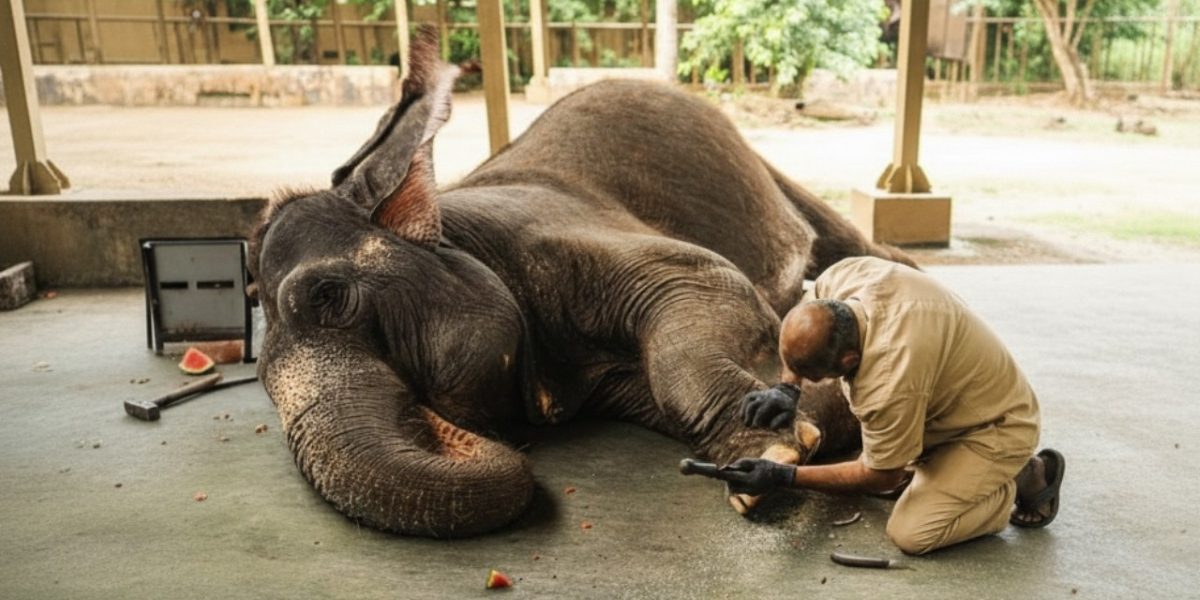A Story of Hope and Transformation
Across the global conservation landscape, few stories radiate as much hope as those born from courage, compassion, and strong governance. Today, India’s example stands as a testament to what happens when wildlife protection is anchored in integrity and innovation.
Two institutions — the Greens Zoological Rescue and Rehabilitation Centre (GZRRC) and the Radha Krishna Temple Elephant Welfare Trust (RKTEWT) — have become examples of what ethical wildlife management can achieve. Their operations, recently reviewed by the CITES Secretariat, have earned global recognition for their exceptional standards, transparent practices, and deep respect for wildlife dignity.
For Africa — where wildlife is not only heritage but also an economic and cultural lifeline — India’s approach offers valuable lessons in building excellence that can last.
Excellence Rooted in Integrity and Care
The Secretariat’s assessment found that both GZRRC and RKTEWT operate at very high standards, maintaining advanced facilities designed to support animal welfare at every level. Their enclosures reflect natural habitats, providing freedom and comfort rather than confinement.
Equipped with modern veterinary units and professional caregivers, the centers have pioneered innovative medical procedures for endangered species — particularly those listed under Appendix I of the CITES Convention, the world’s most vulnerable animals.
The review highlighted that both institutions have achieved significant successes in veterinary care and rehabilitation, and that their findings are being shared with the wider scientific community — a gesture that contributes to global learning and collaboration.
Ethical Trade and Full Legal Compliance
The hallmark of both institutions is their commitment to transparency and legal compliance. The Indian Management Authority confirmed that all animal imports by GZRRC and RKTEWT have strictly followed the official CITES and national procedures.
Importantly, the Secretariat found no evidence of animals being brought into India without proper CITES export or re-export permits, and no imports undertaken for commercial purposes. Every process, from acquisition to care, was handled ethically and with full documentation.
This level of compliance reinforces the truth that conservation must not only protect life, but also uphold law and integrity. For African wildlife centers — where governance, documentation, and ethical trade remain central challenges — this model demonstrates that it is possible for excellence and accountability to go hand in hand.
Transparency and Ethical Decision-Making
One of the most telling moments of the Secretariat’s mission was a case involving potential animal imports from Cameroon. When inconsistencies and a lack of transparency were detected on the Cameroon side, the GZRRC chose to withdraw from the engagement entirely — surrendering and cancelling all permits. No import took place.
This decision reflected a mature, ethics-first approach — prioritizing animal welfare and procedural transparency over convenience. Such choices help define credible conservation institutions and set the tone for global cooperation rooted in honesty.
Commitment to Continuous Improvement
During the mission, discussions between the Secretariat, India’s Management and Scientific Authorities, and representatives from both GZRRC and RKTEWT revealed a shared dedication to continuous improvement.
The Indian authorities expressed appreciation for the Secretariat’s guidance and committed to working on enhancing their internal procedures. Likewise, the leadership of both centers reaffirmed their commitment to remain fully compliant with CITES and to strengthen their own due diligence systems.
This openness to learning and evolution mirrors what is happening across Africa, where countries like Kenya, Rwanda, Botswana, and South Africa are constantly refining their conservation models to align with global standards while staying true to local realities.
Learning and Leading

Africa holds some of the planet’s most iconic wildlife — and some of the most passionate conservationists. Yet, challenges such as funding gaps, weak regulation, and illegal trade often hinder progress.
India’s example provides a powerful blueprint: ethical governance, structured compliance, and unwavering transparency have the potential to transform how conservation institutions are run.
Imagine a continent where every wildlife sanctuary operates with documented integrity, where medical facilities are innovation hubs, and where African experts exchange valuable practices globally — not as beneficiaries of knowledge, but as co-creators of it.
This is the future Africa can strive for: one where responsibility becomes culture, and conservation becomes collaboration.
A Shared Future for Wildlife Care
The achievements of the GZRRC and RKTEWT remind the world that conservation is not merely a technical field — it’s a moral calling. Their success illustrates that when governments, scientists, and caregivers align around ethics and excellence, even the most endangered species can thrive.
For Africa, this story is a mirror and a map. It reflects the potential already alive across the continent — from the David Sheldrick Wildlife Trust in Kenya to SANParks in South Africa — and it maps the way forward: through transparency, collaboration, and relentless pursuit of quality.
Because when we care for wildlife with integrity, we don’t just preserve animals; we protect our shared humanity, our heritage, and the beating heart of our planet.

















